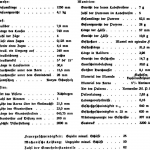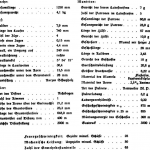The following information on the Gewehr 88 Carbine comes from Chapter 12 of Mauser Rifles and Pistols by W. H. B. Smith. Mauser Rifles and Pistols is also available to purchase in print.
Three forms of carbines were made in quantity in the Model 1888. One was the rifle itself cut down 10.5 inches and with the bolt handle bent down somewhat. This was really a short rifle.
The second was slightly shorter and had a stock which came to the muzzle. The front band served also as sight guard. This bolt was straight as in the standard rifle.
Number three was the same as number two except that the bolt handle was turned down and a stacking rod was provided.
The 1888 in all its forms was extensively converted, after being discarded by the German Army, to use as a sporting rifle. Because of the soft metal in the receiver, it was possible for European gunsmiths, as well as some American makers of custom rifles, to manufacture beautiful sporting rifles excellently finished, from the receivers or action. Many were converted to employ the Mauser-type box magazine.

Warning. These rifles when found as sporting arms are often known as the “Mannlicher-Haenel” or “Schilling-Mannlicher,” because the names of those manufacturers sometimes appear on them. They are converted military rifles, however, not to be confused with the Mannlicher-Schoenauer high grade sporting rifles or the Schilling or Haenel top quality rifles of later design and manufacture.
It must definitely be remembered, however, that these rifles were intended for the 7.92mm cartridge in its original form. Later developed German cartridges are much too powerful to be used in this action.
The German sporting rifle cartridge for the 1888 is known as the “8×57 rimless.” The actual caliber is commonly about 7.9 mm, that being the usual German War Office designation for the old “M. 1888” cartridge. In the U.S. Mauser it is generally called 8mm. All are the same; but they must not be confused with the 8mm Mannlicher-Schoenauer cartridge which differs in length, shape and ballistics.
1888 rifles can be dangerous because the sharp pointed (Spitzer) bullet ammunition intended for the later models, will chamber. Under no circumstances should this military pointed bullet ammunition ever be used in the model 1888 rifle or in sporters made from the 1888 action.
The sporting model 1888 cartridge uses a relatively light charge of modern leaf powder with a relatively soft bullet. Since the present model German military cartridge uses more of the same modern powder and a differently shaped bullet of greater diameter, the pressure developed by the new cartridges is dangerous for use in the earlier rifle.
It is true that the M. 1888 was originally reported to use a cartridge with a chamber pressure of about 47,040 pounds. However, pressure testing methods were not scientifically controlled in those days. Furthermore, the bolt in the M. 1888 is bored out from the front to receive a removable bolt face. As a result, the lugs are further back than in genuine Mauser designs. The old bullet diameter of about .318 inch was increased in 1905 to about .323 inch.
Americans who would not think of using a low number Springfield 1903 with modern ammunition, will unhesitatingly so use this old German type which was built while our Army was still using black powder single shot rifles!
The compression of the bolt lugs, their seats and the removable bolt head, require headspace attention they seldom get. These factors can be very serious with these early model German arms when used with modern ammunition, even where the bore has worn down.
In recognition of these factors, manufacturers in recent years have seldom loaded the M. 1888 type cartridge to give a pressure much higher than 35,000 pounds, using a relatively soft bullet.
Much confusing information has been spread through the years about the German round nose and pointed bullet 7.9 ammunition. The diameters of the bullets, length of bullets, chamber pressure and other details as generally published in English are at wide variance with the official Mauser figures.
In general the Chamber Pressure is listed at 21-tons per sq. inch for the round nose and 17.5 tons for the pointed nose. In America these figures are usually quoted in foot-pounds on a basis of 2000 pounds to the ton, without making allowance for the fact that the British ton is 2240 pounds.
Furthermore, the official Mauser figures are 3200 Atmospheres for the round nose (an Atmosphere is approximately 14-2/3 foot pounds) and 3500 Atmospheres for the pointed bullet! In other words, 46,933 ft. lbs. for the round nose and 51,333 ft. lbs. for the pointed nose.
Since the official Mauser figures allow a greater maximum bullet diameter, plus an increased chamber pressure for the modern pointed (S) bullet, the danger of using such a cartridge in the obsolete M. 1888 .rifle should be apparent.
For purposes of comparison, the official Mauser specifications on the two cartridges and on the Gew. 98 as modified for them are reproduced herewith. It must be emphasized that these are pre-War figures, and that arms and ammunition made during the War may vary.


Note also that the Austrian 8mm Mannlicher-Schoenauer is an entirely different cartridge from either one of the German. It is actually 8.2x56mm. Its case is shorter than the Mauser case, and the neck is differently placed.
Some idea of the number of these rifles made may be gained from the fact that in the year 1890 to 1891, Ludwig Loewe & Company supplied 425,000 model 1888 rifles to the German Army alone. These rifles were manufactured at the two Loewe plants at Charlottenberg on the outskirts of Berlin, and at the Mauser Waffenfabrik, at Oberndorf, in Württemberg. All these plants were under the financial control of Loewe. The combined plants’ capacity was 60,000 rifles per month.
Some idea of the tremendous extent of these manufacturing operations may be gained from the following figures: The rifle barrel required 54 operations to complete. The bolt assembly required 174 operations. The receiver required 120 operations. The complete magazine required 141 operations; while the stock required 49.
